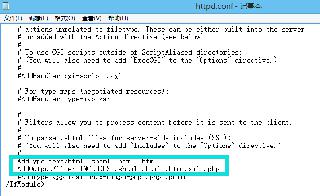SpringBoot實現異步事件驅動的方法
在項目實際開發過程中,我們有很多這樣的業務場景:一個事務中處理完一個業務邏輯后需要跟著處理另外一個業務邏輯,偽碼大致如下:
@Servicepublic class ProductServiceImpl { ... public void saveProduct(Product product) {productMapper.saveOrder(product);notifyService.notify(product); } ...}
很簡單并且很常見的一段業務邏輯:首先將產品先保存數據庫,然后發送通知。
某一天你們可能需要把新增的產品存到Es中,這時候也需要代碼可能變成這樣:
@Servicepublic class ProductServiceImpl { ... public void saveProduct(Product product) {productMapper.saveProduct(product);esService.saveProduct(product)notifyService.notify(product); } ...}
隨著業務需求的變化,代碼也需要跟著一遍遍的修改。而且還會存在另外一個問題,如果通知系統掛了,那就不能再新增產品了。
對于上面這種情況非常適合引入消息中間件(消息隊列)來對業務進行解耦,但并非所有的業務系統都會引入消息中間件(引入會第三方架構組件會帶來很大的運維成本)。
Spring提供了事件驅動機制可以幫助我們實現這一需求。
Spring事件驅動spring事件驅動由3個部分組成
ApplicationEvent:表示事件本身,自定義事件需要繼承該類,用來定義事件 ApplicationEventPublisher:事件發送器,主要用來發布事件 ApplicationListener:事件監聽器接口,監聽類實現ApplicationListener 里onApplicationEvent方法即可,也可以在方法上增加@EventListener以實現事件監聽。實現Spring事件驅動一般只需要三步:
自定義需要發布的事件類,需要繼承ApplicationEvent類 使用ApplicationEventPublisher來發布自定義事件 使用@EventListener來監聽事件這里需要特別注意一點,默認情況下事件是同步的。即事件被publish后會等待Listener的處理。如果發布事件處的業務存在事務,監聽器處理也會在相同的事務中。如果需要異步處理事件,可以onApplicationEvent方法上加@Aync支持異步或在有@EventListener的注解方法上加上@Aync。
源碼實戰創建事件
public class ProductEvent extends ApplicationEvent { public ProductEvent(Product product) {super(product); }}
發布事件
@Servicepublic class ProductServiceImpl implements IproductService { ... @Autowired private ApplicationEventPublisher publisher; @Override @Transactional(rollbackFor = Exception.class) public void saveProduct(Product product) { productMapper.saveProduct(product); //事件發布publisher.publishEvent(product); } ...}
事件監聽
@Slf4j@AllArgsConstructorpublic class ProductListener { private final NotifyService notifyServcie; @Async @Order @EventListener(ProductEvent.class) public void notify(ProductEvent event) { Product product = (Product) event.getSource(); notifyServcie.notify(product, 'product'); }}
在SpringBoot啟動類上增加@EnableAsync 注解
@Slf4j@EnableSwagger2@SpringBootApplication@EnableAsyncpublic class ApplicationBootstrap {...}
使用了Async后會使用默認的線程池SimpleAsyncTaskExecutor,一般我們會在項目中自定義一個線程池。
@Configurationpublic class ExecutorConfig { /** 核心線程數 */ private int corePoolSize = 10; /** 最大線程數 */ private int maxPoolSize = 50; /** 隊列大小 */ private int queueCapacity = 10; /** 線程最大空閑時間 */ private int keepAliveSeconds = 150; @Bean('customExecutor') public Executor myExecutor() {ThreadPoolTaskExecutor executor = new ThreadPoolTaskExecutor();executor.setCorePoolSize(corePoolSize);executor.setMaxPoolSize(maxPoolSize);executor.setQueueCapacity(queueCapacity);executor.setThreadNamePrefix('customExecutor-');executor.setKeepAliveSeconds(keepAliveSeconds);// rejection-policy:當pool已經達到max size的時候,如何處理新任務// CALLER_RUNS:不在新線程中執行任務,而是由調用者所在的線程來執行executor.setRejectedExecutionHandler(new ThreadPoolExecutor.CallerRunsPolicy());executor.initialize();return executor; }}
到此這篇關于SpringBoot實現異步事件驅動的方法的文章就介紹到這了,更多相關SpringBoot 異步事件驅動內容請搜索好吧啦網以前的文章或繼續瀏覽下面的相關文章希望大家以后多多支持好吧啦網!
相關文章:

 網公網安備
網公網安備